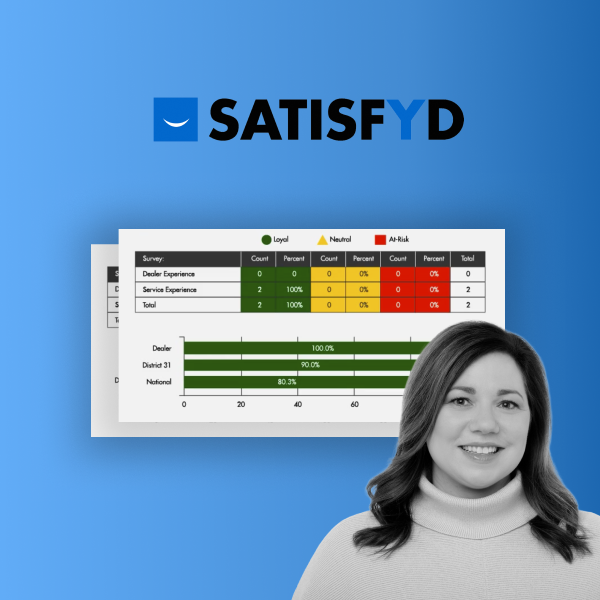Today’s business intelligence (BI) marketplace abounds with platforms claiming how well they support augmented analytics, machine learning (ML) and artificial intelligence (AI). Yet most companies still look for the basics — dashboards, data visualization and easier reporting.
In this post, we’ll compare the results of the world's largest survey of data, BI and analytics trends, “BARC Data, BI & Analytics Trend Monitor 2021,” with the reality of the everyday BI consumer.
While tech vendors often talk about innovation, the BARC survey notes that turbulent times have kept companies focused on the fundamentals — getting insight into their data versus progressing into advanced analytics like AI/ML. That finding matches the top three reasons our customers are deciding to implement a TARGIT solution right now:
- Increase the speed and accuracy of reporting
- Give business users easy access to information
- Let every user make data-driven decisions
Reason #1: Increase the Speed and Accuracy of Reporting
Different companies have different reasons to begin a BI journey depending on their stage. At the start, most companies typically have two goals: 1) improve on the reporting their current systems provide and 2) automate reporting, eliminating the time-consuming and error-prone process of manual reporting.
“Faster reporting and analysis of data is a challenge in many companies,” says the Data, BI and Analytics Trend Monitor. It’s little wonder real-time analytics is one of the top 10 trends.
According to the study, “there is an increasing need to make data from transactional systems available immediately to support faster and fact-based operational decision-making. Analytics with real-time data can complement an organization’s existing analytics strategy to optimize certain business processes.”
At TARGIT, one of our priorities is to make our platform, TARGIT Decision Suite, as easy as possible to give the right information to the right people. We make sure to provide flexible options so our users can readily design, manage and share reports.
Reason #2: Give Business Users Easy Access to Information
Once the first phase of BI implementation is done and customers have fast and accurate reporting, they realize they can merge data from various departments as well as add more data from different source systems to create new measures and calculations. That brings them closer to achieving one of their primary BI and analytics goals — to give business users easy access to information.
Now they can go beyond static reports and summary-level metrics to interacting, exploring and drilling into details on their own. “Creating essential parts of analytics and BI content through self-service is part of almost every new implementation and remains a high priority,” says the Trend Monitor.
Self-service analytics can take on different meanings depending on a company’s priorities. For instance, you might want pre-built dashboards specifically designed for your needs versus the option to transform a measure on the fly to create your own dashboards and reports.
Regardless of how any company defines self-service analytics, it has always been a priority. That’s why TARGIT always makes self-service a priority in our product development.
It’s interesting to note that while self-service analytics ranked the #5 priority in the 2021 Trend Monitor, it had occupied a higher position for the prior five years. The step down correlates with the rise in the data-driven culture trend.
Reason #3: Let Every User Make Data-Driven Decisions
The study delves into the reasons for the shift toward data-driven enterprises. “One of the biggest shifts in today’s business world is the transformation from isolated and project-oriented data usage to a completely data-driven enterprise,” it says. “‘Data-driven’ in this context means that as many decisions and processes within a business as possible are based on data.”
In most cases, our customers have standard "reports" that come out of their ERP systems. These reports normally consist of lists from a specific department, which aren't robust enough for their needs. Typically, they acquire a BI tool to create cleaner and better-looking dashboards with the ability to merge departmental data into one place and gain better visibility into their company's data as a whole. For example, they might currently have a report for their inventory and a separate report for their sales. The ability to combine their inventory levels with any open sales and purchase orders provides the insight they need to make an informed business decision.
Being a data-driven culture takes the number three rank in this year’s Data, BI & Analytics Trend Monitor, and it’s no surprise. The study reports that “the main aim is to replace managers’ gut feelings with data-derived facts and to empower all employees to actively use data to enhance their daily work. The goal is to fully utilize a company’s potential by making decisions more successful, initiatives more effective and competitive advantages more striking.”
Today, less than 20% of knowledge workers use BI applications, utilizing less than 20% of the available data.
But with the right planning and preparation, your organization can avoid the common pitfalls, and succeed in making better data-driven decisions. Watch this webinar to learn our approach on how to become a data-driven organization to turn your company into a data-driven powerhouse.
Keys to Success: Fundamentals and Flexibility
Increasing the speed and accuracy of reporting, giving business users easy access to information, and letting every user make data-driven decisions are all important reasons to choose a BI platform. But ultimately, your choice comes down to your stage in the BI journey and your priorities.
Organizations shouldn’t only invest in the BI and analytics platform itself, but in new strategies to ensure high user adoption among those who would benefit most from BI. Just as important as adopting new best practices, though, is knowing which pitfalls to dodge along the way. Avoiding these 10 common BI issues will help you reach the goal of a data-driven environment throughout the entire company.
The most important thing to take away from analyzing the BI trends is that trends change over time, just like your priorities. What’s essential to your business now will change over time, and the best BI solution is one that masters the fundamentals while providing the flexibility to adapt.




